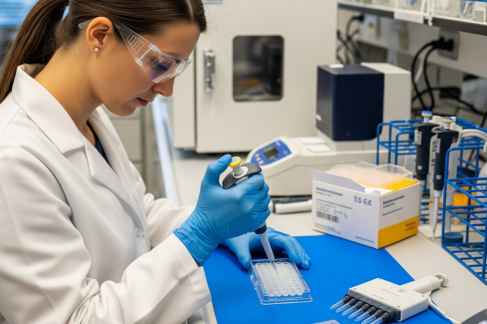Role of TXA2 Rat ELISA Kit in Renal Pathophysiology Research

The renal system, also known as the urinary system, is responsible for filtering waste and maintaining the body’s fluid, electrolyte, and acid-base balance. It helps keep the internal environment stable, regulates blood pressure, controls erythropoiesis, and detoxification.
The primary components of the renal system are the kidneys, ureters, urinary bladder, and urethra. A healthy renal system is crucial for the proper removal of waste and toxins from the body.
However, dehydration, high blood pressure, diabetes, infections, kidney stones, autoimmune diseases, genetics, poor diet, sedentary lifestyle, and certain medications and toxins can disrupt the functioning of the renal system. As a result, harmful substances build up in the body, which further lead to various diseases and even kidney failure.
When kidney tissues are injured due to diseases, they release signaling molecules, such as Thromboxane A2, that alter vascular tone and inflammatory responses.
What is Thromboxane A2?
TXA2 is a lipid compound derived from arachidonic acid through the cyclooxygenase (COX) pathway. It is produced by platelets, vascular endothelial cells, and renal tissues. It helps promote vasoconstriction and platelet aggregation.
In healthy conditions, TXA2 helps maintain vascular homeostasis. However, an excess amount of TXA2 leads to reduced renal blood flow, increased oxidative stress, and glomerular injury.
So, scientists need to study TXA2 levels to understand the renal damage mechanism and develop better therapeutic interventions. Here is where the TXA2 rat ELISA kit comes into play.
What is the TXA2 Rat ELISA Kit?
ELISA stands for Enzyme-Linked Immunosorbent Assay. It is a plate-based technique used to detect molecular substances in a biological sample. It relies on the principle of antigen-antibody interaction.
The TXA₂ rat ELISA Kit is used to detect and quantify Thromboxane A₂ (TXA₂) or its stable metabolite Thromboxane B₂ (TXB₂) in rat biological samples such as serum, plasma, urine, or tissue homogenates.
Since TXA₂ is highly unstable and breaks down quickly (within seconds) in the body, most ELISA kits measure TXB₂, which is formed when TXA₂ is naturally degraded. This indirect measurement accurately reflects the amount of TXA₂ produced in the sample.
How Can the TXA2 Rat ELISA Kit Help in Renal Pathophysiology Research?
Measure TXA₂ Levels in Kidney Disease Models
Researchers use animal models, such as rats, to study kidney diseases like diabetic nephropathy, hypertensive nephropathy, and acute kidney injury (AKI). In these conditions, TXA₂ production usually increases due to stress and inflammation in kidney tissues.
The TXA₂ rat ELISA kit helps scientists to accurately measure TXA₂ or TXB₂ levels in the blood, urine, or kidney tissue. When TXA₂ levels are higher than normal, it indicates that the kidneys are under stress or damaged.
This helps identify when and how strongly TXA₂ is involved in the disease process. It also helps compare healthy and diseased kidney function in controlled studies.
Understand Inflammation and Oxidative Stress
Inflammation and oxidative stress are two key factors that lead to kidney injury. TXA₂ acts as an inflammatory mediator. So, it helps trigger and maintain inflammation inside the kidneys.
By measuring TXA₂ using the ELISA kit, researchers can determine how inflammation develops and spreads during renal disease. High TXA₂ levels often mean that the body’s immune system is overactive and the kidney tissues are damaged.
Similarly, TXA₂ is linked with oxidative stress, a condition where harmful molecules called free radicals damage cells. TXA₂ levels analysis allows scientists to evaluate the connection between oxidative stress and kidney cell injury, giving better insight into how kidney diseases worsen over time.
Evaluate Drug Effectiveness
The TXA₂ Rat ELISA Kit is also used to test new drugs and therapies that aim to protect the kidneys. Many medicines, such as COX inhibitors, antioxidants, or TXA₂ receptor blockers, are designed to reduce TXA₂ production or block its harmful effects.
By measuring TXA₂ levels before and after treatment, researchers can determine whether a drug is working effectively. Low levels of TXA₂ indicate that the treatment is helping reduce inflammation and improve blood flow, whereas high levels of TXA₂ mean that either the drug is not effective or the dosage may need adjustment.
This type of testing helps scientists discover new treatments for conditions like chronic kidney disease (CKD) and high blood pressure-related renal injury.
The Bottom Line
Now that you know how the ELISA technique helps in renal pathophysiology research, what are you waiting for? Find a reliable supplier to buy a high-quality TXA2 rat ELISA kit for your experiment and ensure you get accurate and reproducible results!

Comments are closed.